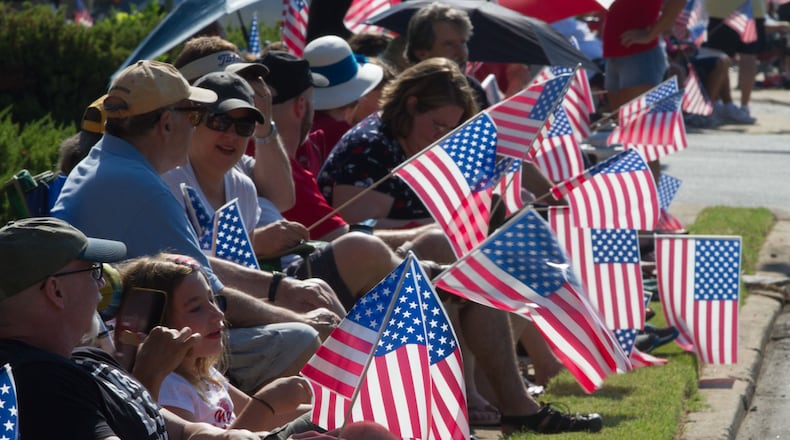From Memorial Day and Labor Day to Thanksgiving, Americans have always been willing to move the dates of major holidays around to accommodate three-day weekends and Black Friday shopping blowouts.
But the country shows no such independent streak when it comes to Independence Day. The Fourth of July falls on, well, July 4th. And everything from fireworks shows to the AJC Peachtree Road Race patriotically follows suit.
But why is that? And why did the Founding Fathers -- who managed to agree on the not-so-minor issue of splitting off from England, after all -- not initially all agree on when Independence Day should be celebrated?
Here’s the essential 411 on the Fourth:
The "first" July 4th actually got started two days earlier: Technically speaking, the Thirteen Colonies decided to divorce Great Britain on July 2, 1776. That's when the Second Continental Congress, meeting in Philadelphia, voted to approve a resolution of independence that Virginia delegate Richard Henry Lee had proposed in June. A five-man committee had already been appointed to start drafting a formal statement laying out the reasons behind the separation -- mostly written by Thomas Jefferson, this so-called "Declaration of Independence" was formally adopted by Congress two days later, on July 4, 1776.
Related video: The history of July 4th
Button Gwinnett showed up: Fifty-six delegates wound up signing the Declaration of Independence. But it's not clear that all of them did so on July 4, 1776. Jefferson, Benjamin Franklin and John Adams all later swore they put their, um, John Hancocks, on the handwritten Declaration that very day; yet many historians now believe that at least some of the delegates -- including Button Gwinnett of the Savannah/St. Catherine's Island area -- signed the document a month later, most likely on Aug. 2, 1776. Along with George Walton and Lyman Hall, Gwinnett was one of three Georgians to sign the Declaration of Independence; his name may be all over a certain county now, but his signature is among the rarest and most valuable of all 56 delegates.
John Adams basically invented the idea of celebrating the 4th of July with parades and fireworks . . .just on another day! Writing home to his wife, Abigail, from the Second Continental Congress, the future president of the United States foresaw future Independence Day celebrations thusly: "It ought to be solemnized with pomp and parade, with shows, games, sports, guns, bells, bonfires, and illuminations, from one end of this continent to the other, from this time forward forever more." He got the commemoration part right (fireworks are pretty much "illuminations" by another name now); but he was talking about celebrating the events of July 2nd (his letter home was dated July 3).
RELATED: July 4th in Atlanta: A county-by-county, daily guide to where, when to see fireworks
Check the date on the document: Adams's pro-July 2 sentiments notwithstanding, July 4 -- the date that appears at the very top of the Declaration of Independence -- quickly became the day to celebrate our independence. Philadelphia and the Continental Congress held the first official commemoration on July 4, 1777, featuring a banquet, ships draped in patriotic bunting and (of course) fireworks; Gen. George Washington gave his soldiers double rations of rum on July 4, 1778; Massachusetts made July 4 an official state celebration in 1781, and so on, until 1870, when Congress passed a law making Independence Day a federal holiday. The date was fixed at "the fourth day of July," but when July 4 falls on a weekend, the federal holiday is observed on either Friday or Monday.
Officially spooky. Three former U.S. presidents died on the Fourth of July -- two of them on the very same Independence Day. On July 4, 1826, John Adams (president No. 2) and Thomas Jefferson (No. 3) died within five hours of each other -- and exactly 50 years to the day since the Declaration of Independence they'd both helped to write had been formally adopted. And then the very next former president to die, James Monroe (No. 5), passed away on July 4, 1831. On a happier note, Calvin Coolidge (No. 30) was born on July 4, 1872. Then again, "Silent Cal," became vice president in 1921 and served only about two years before being unexpectedly thrust into the Oval Office by President Warren G. Harding's death. Harding died on Aug. 2, 1923 -- 147 years to the day since many delegates to the Second Continental Congress most likely signed the Declaration of Independence. Spooky or super-patriotic? You decide.
About the Author
Keep Reading
The Latest
Featured



